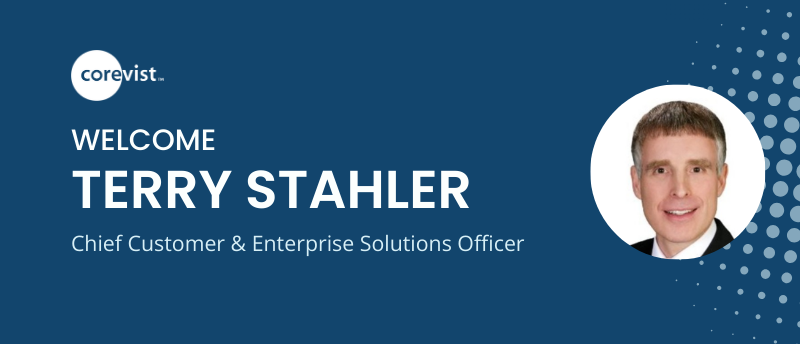Share
Author
Damian Dellavecchia
Share
Strategic Customization Management
In the world of SAP-integrated eCommerce, most manufacturers end up choosing to do a little customization to bring their unique business processes to the web. We’ve seen many intelligent customizations over the years—for example:
- A tweak to how Corevist Commerce displays RDD (Requested Delivery Date)/EDD (Expected Delivery Date).
- A special rule so customers can save on shipping by filling up a truckload.
- Alternative units of measure.
However, in 12 years of serving manufacturers, we’ve learned that not every customization request is in the client’s best interest. Occasionally, when a client asks for a customization, we end up advising the client not to spend more money with us in that area.
Here’s why we sometimes say no (plus two examples).
Why we sometimes say no
When we look at a customization request, we weigh it against the client’s big-picture goals, and we think through all the repercussions which that small request may have. Sometimes, we find that a specific customization may seem to solve a small discrete problem; yet in reality, it will cause a larger, systemic problem.
In that case, if the cost and impact to other business processes is too great, the customization may not be justified. Sometimes, that means the customization isn’t a good fit for the first rollout, but it will be a good fit for Phase II. Sometimes, it means the customization may never be a good fit for the client’s larger goals.
Here are two examples which we’ve seen over the years. Incidentally, they’re both related to bundled products.
EXAMPLE 1: Splitting bundled products
We once had a request from a client to be able to split orders. If the eCommerce user added multiple quantities of the same item to the cart, the client wanted the user to be able to split them out to do different things.
If we had built that feature, it would have affected ALL items placed in the cart. For example, in cases where products come bundled together, this feature would have allowed the user to “un-bundle” those product groups, potentially deleting some from the order. This would have violated the client’s SAP business rules, which insisted that those products be sold as a bundle.
If you’ve already established how a product should be sold, and if your SAP business rules reflect your intentions, it’s best to keep your web store aligned with those business rules. This prevents the emergence of a divergent set of eCommerce business rules. When that happens, it only creates problems down the road, both for IT and the business.
EXAMPLE 2: Allowing quantity adjustment within bundled products
Here’s another example which we run into sometimes. The client sells products in a bundle, and they want the customer to have the option to change the quantity for the supporting products in the bundle. For example, where SAP would force the customer to buy 10 of the Supporting Product for every 1 Main Product, the client wanted to give the customer the ability to change the Supporting Product quantity.
While we could build this functionality into the client’s Corevist Commerce instance, it’s usually not sustainable to do so. Corevist Commerce is built on a direct integration to SAP to ensure that our platform enforces your SAP business rules automatically. This is cheaper and more sustainable than maintaining 2+ separate, divergent versions of your business rules in different systems.
Generally speaking, however a product is sold in SAP, that’s how it should be sold in Corevist Commerce. That way, your IT team can make changes to the relevant SAP business rules, and those changes will immediately take effect in Corevist Commerce without further effort. This reduces waste in your allocation of IT resources, and it keeps the web channel working for less.
The Takeaway: Know your business processes
The only way to evaluate a potential customization accurately is to see how it will affect the rest of your business processes. Start by thinking through all the repercussions of a potential change to your business rules. This will help you determine if that change is worth pursuing—or if it will be more trouble than it’s worth. With that information in hand, you’re equipped to design your web channel specifications with full strategic understanding.
At Corevist, we don’t just offer a platform, implementation, and support. We also explore your goals with you and work to help you nail down exactly how your eCommerce store should behave. It’s how we act as trusted advisors to our clients—and how we help them grow powerful web channels that process hundreds of millions in revenue each year.
Moving forward: FREE case study
Want to see Corevist Commerce in action? Download this case study on a Fortune 1000 Manufacturer who chose Corevist. The company had an audacious goal—to re-platform off an old solution, then grow their existing $100M in digital revenue to $500M over the course of several years. Learn how Corevist delivered early growth of 204%, to $76M/quarter and counting.
[want_more title=”Learn more” subtitle=”FREE Case study: Fortune 1000 Manufacturer” description=”Learn how this organization launched ecommerce and grew revenue 204%, to $76M/quarter.” button_text=”Download Now” button_link=”https://www.corevist.com/fortune-1000-manufacturer/” button_class=”btn btn-primary fortune-1000″ title2=”See it for yourself” subtitle2=”Talk to us” description2=”Curious what Corevist Commerce can do for you? Let us show you a personalized demo. You’ll see ecommerce with real-time SAP data.” button_text2=”Schedule Demo” button_link2=”https://www.corevist.com/demo/” button_class2=”demo-popup”]








